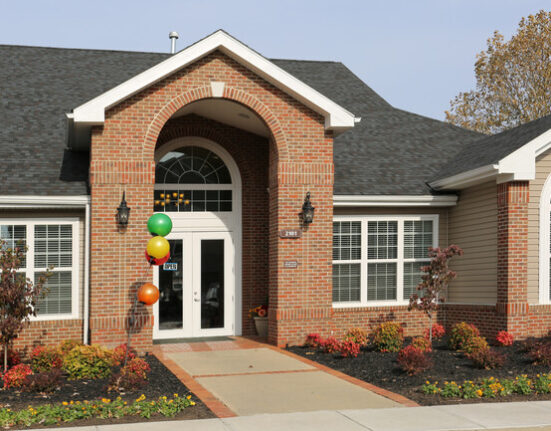Imagine setting off on the perfect RV road trip—endless highways, stunning sunsets, and the freedom of the open road. For many, this is the ultimate getaway, a chance to live in the moment and enjoy nature. But picture this: a sudden rainstorm hits halfway through your dream journey. You park, thinking you’re safe, only to find water dripping from the ceiling, seeping through cracks you didn’t know existed. The trip that began with excitement quickly turned into a nightmare. This scenario is all too familiar for RV owners, and it’s why RV roof sealants are essential to maintaining your mobile home.
Sealing your RV’s roof isn’t just about patching leaks; it’s about preserving the long-term value of your vehicle and ensuring your adventures continue without unnecessary interruptions. This article explores the types of RV roof sealants available, their benefits, and essential tips for keeping your roof watertight.
Understanding the Importance of RV Roof Sealant
The roof of an RV is subjected to extreme conditions—sun, wind, rain, snow, and even debris from trees or passing birds. Over time, these elements can degrade the roof material, causing cracks and allowing moisture to seep in. If left unchecked, a small leak can lead to extensive water damage, compromising the RV’s interior, wiring, insulation, and structural integrity.
According to a Recreational Vehicle Industry Association (RVIA) study, nearly 70% of RV owners reported experiencing roof-related damage within the first ten years of ownership. Water damage, in particular, is one of the leading causes of costly repairs, with some estimates suggesting that RV water damage can cost upwards of $10,000 if not caught early.
Types of RV Roof Sealants
Choosing the proper sealant for your RV depends on the material of your roof and the type of damage you’re trying to prevent. The most common RV roof materials include rubber (EPDM or TPO), fibreglass, and aluminium, each requiring a specific sealant type.
- Rubber Roof Sealants
- EPDM (Ethylene Propylene Diene Monomer): This is a durable synthetic rubber used in most RV roofs. EPDM sealants are designed to adhere to this surface type, offering flexibility and UV protection. A key feature is that they expand and contract with temperature changes, preventing cracks and tears.
- TPO (Thermoplastic Olefin): TPO roofs are common in newer RVs and require a specialized sealant that bonds with the material. These sealants are usually white and reflect UV rays, reducing heat absorption in the RV.
- Silicone Roof Sealants
Silicone is known for its waterproofing properties. It creates a durable, flexible seal and works well on various materials, including metal and rubber. One of its key advantages is its resistance to UV light and extreme temperatures, making it ideal for RV roofs exposed to harsh environments.
- Acrylic Roof Sealants
Acrylic-based sealants are great for minor repairs and are typically used on metal RV roofs. They are quick-drying, easy to apply, and affordable, but they are less long-lasting than silicone or rubber-specific sealants.
- Polyurethane Roof Sealants
Polyurethane sealants offer excellent durability and flexibility. They bond well with most surfaces and provide a long-lasting waterproof barrier. However, they can be more challenging to apply and require careful attention to detail during installation.
Benefits of Using RV Roof Sealants
- Prevents Water Damage
The most apparent benefit of roof sealants is that they prevent water from entering your RV. Water damage can cause mould, rot, and electrical issues. Regular maintenance with a quality sealant keeps your RV dry and safe.
- Extends Roof Lifespan
A suitable sealant protects your roof from the elements, including UV rays, which can cause roofing materials to degrade. With regular application, you can significantly extend the life of your RV roof, avoiding the need for costly replacements.
- Energy Efficiency
Some sealants, particularly those designed for rubber roofs, are reflective and help reduce heat absorption in RVs. This means your air conditioning system doesn’t have to work as hard to maintain a cool temperature, which can reduce energy usage and save on fuel costs during summer trips.
- Cost-Effective
While applying a roof sealant may seem unnecessary, it’s far more cost effective than dealing with water damage repairs. For example, silicone sealants typically range from $10 to $30 per tube, while a total roof replacement can cost upwards of $5,000, depending on the RV size.
How to Apply RV Roof Sealant: Step-by-Step
Applying RV roof sealant is easy, but it requires attention to detail. Here’s a simple guide to ensure you get it right:
- Clean the Roof: Before applying any sealant, ensure the roof is clean and dry. Remove dirt, debris, and old sealant with a scrub brush and cleaner designed for RV roofs.
- Inspect for Damage: Look for cracks, holes, or areas where the existing sealant is peeling away. Mark these areas for treatment.
- Apply the Sealant: Depending on the type of sealant, use a caulking gun or a roller to apply it evenly over the damaged areas. Follow the manufacturer’s instructions for drying times and application thickness.
- Check Seams and Edges: Pay special attention to the seams and edges of the roof, as these are common areas where leaks develop. Reinforce these sections with extra sealant if needed.
- Inspect Regularly: Even after applying sealant, it’s essential to inspect your roof regularly—especially after long trips or exposure to extreme weather.
How Often Should You Reseal Your RV Roof?
The frequency of resealing your RV roof depends on the material and the environment in which the RV is used. Generally, most RV experts recommend inspecting your roof at least twice a year—once before the summer season and once before winter.
Rubber roofs typically need resealing every 2 to 4 years, depending on exposure to the elements, while metal and fibreglass roofs may last longer between applications. However, always follow the guidelines provided by your RV manufacturer to ensure optimal maintenance.
Conclusion: Protecting Your RV for the Long Haul
The dream of RV living promises freedom, adventure, and connection with the open road. But routine maintenance is vital to enjoying the journey without unexpected setbacks. Applying a high-quality roof sealant is a small investment that pays off in the long run, protecting your RV from leaks, water damage, and costly repairs.
Whether you’re a seasoned RV enthusiast or just starting your adventures, sealing your RV roof is one of the best ways to ensure your home on wheels stays in top condition for years to come.














